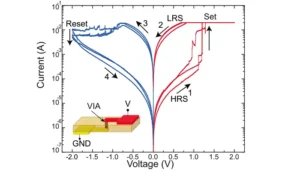The Doppler effect, a phenomenon first described by Christian Doppler in 1842, is a fundamental concept in physics that explains the change in frequency of a wave (sound, light, or other) perceived by an observer when there is relative motion between the source of the wave and the observer. While it has significant implications in understanding the behaviour of waves, its applications extend far beyond theoretical physics. From medical diagnostics to astronomy, and from traffic monitoring to weather forecasting, the Doppler effect finds numerous practical applications in various fields.
1. Medical Diagnostics:
In medical diagnostics, the Doppler effect is extensively utilized in techniques such as Doppler ultrasound. This technology employs sound waves to create images of internal body structures and monitor blood flow. By analysing the frequency shift of the ultrasound waves reflected off moving blood cells, doctors can assess the direction and speed of blood flow in real-time. Doppler ultrasound is commonly used in cardiology to diagnose heart conditions, including valve abnormalities and blood clots.
2. Radar and Sonar Systems:
Radar (Radio Detection and Ranging) and sonar (Sound Navigation and Ranging) systems leverage the Doppler effect for detecting the speed and direction of moving objects. In radar systems, electromagnetic waves are transmitted and then bounced off objects such as aircraft or vehicles. The frequency shift of the reflected waves, caused by the Doppler effect, allows radar operators to determine the object’s velocity relative to the radar station. Similarly, in sonar systems used in marine applications, such as navigation and underwater exploration, sound waves are employed instead of radio waves to detect the movement of underwater objects like submarines or marine life.
3. Astronomical Observations:
The Doppler effect plays a crucial role in astronomy for studying celestial objects and phenomena. Astronomers use spectroscopy, a technique that analyses the light emitted or absorbed by objects, to determine their composition, temperature, and motion. By examining the shifts in the wavelengths of light caused by the Doppler effect, astronomers can infer whether an astronomical object is moving towards or away from Earth and at what speed. This information is vital for understanding the dynamics of celestial bodies, including stars, galaxies, and even the expansion of the universe.
4. Meteorology and Weather Forecasting:
In meteorology, Doppler radar systems are employed to monitor weather patterns, track storms, and predict severe weather events such as tornadoes and hurricanes. By measuring the Doppler shift of radar signals reflected off precipitation particles in the atmosphere, meteorologists can estimate wind speed and direction within storms. Doppler weather radar provides invaluable data for issuing timely warnings and ensuring public safety during extreme weather conditions.
5. Traffic Monitoring and Law Enforcement:
Police officers use Doppler radar guns to measure the speed of moving vehicles for traffic enforcement purposes. These devices emit radio waves towards vehicles on the road, and the frequency shift of the reflected waves enables the radar gun to calculate the speed of the targeted vehicle. Doppler radar guns help law enforcement officers identify speeding violations and enforce traffic laws effectively.
6. Cosmology and Understanding the Universe:
In cosmology, the Doppler effect contributes to our understanding of the large-scale structure and evolution of the universe. The redshift of light from distant galaxies, observed due to the expansion of the universe, is a manifestation of the Doppler effect. By measuring the redshift of galaxies, astronomers can determine their relative velocities and infer the rate of expansion of the universe, leading to fundamental insights into cosmological models and theories.
In conclusion, the Doppler effect is a versatile phenomenon with wide-ranging applications across various scientific disciplines and everyday technologies. From medical diagnostics to astronomical observations, and from weather forecasting to law enforcement, its impact on modern society is profound, facilitating advancements in science, technology, and our understanding of the universe. As researchers continue to explore its implications, the Doppler effect remains a cornerstone of modern physics and engineering.




